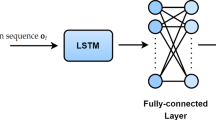Abstract
This paper considers the problem of autonomous robot navigation in dynamic and congested environments. The predictive navigation paradigm is proposed where probabilistic planning is integrated with obstacle avoidance along with future motion prediction of humans and/or other obstacles. Predictive navigation is performed in a global manner with the use of a hierarchical Partially Observable Markov Decision Process (POMDP) that can be solved on-line at each time step and provides the actual actions the robot performs. Obstacle avoidance is performed within the predictive navigation model with a novel approach by deciding paths to the goal position that are not obstructed by other moving objects movement with the use of future motion prediction and by enabling the robot to increase or decrease its speed of movement or by performing detours. The robot is able to decide which obstacle avoidance behavior is optimal in each case within the unified navigation model employed.
Similar content being viewed by others
References
Bennewitz M, Burgard W, Cielniak G, Thrun S (2005) Learning motion patterns of people for compliant robot motion. Int J Robot Res 24(1)
Borenstein J, Koren Y (1991) The Vector Field Histogram—fast obstacle avoidance for mobile robots. IEEE Trans Robot Autom 7(3):278–288
Brock O, Khatib O (1999) High-speed navigation using the global dynamic window approach. In: Proceedings of the IEEE international conference on robotics & automation (ICRA)
Bruce A, Gordon G (2004) Better motion prediction for people-tracking. In: Proceedings of the IEEE international conference on robotics & automation (ICRA)
Chang CC, Song KT (1996) Dynamic motion planning based on real-time obstacle prediction. In: Proceedings of the IEEE international conference on robotics & automation (ICRA), vol 3, pp 2402–2407
Elganar A, Gupta K (1998) Motion prediction of moving objects based on autoregressive model. IEEE Trans Syst Man Cybern Part A 28(6):803–810
Foka A, Trahanias P (2002) Predictive autonomous robot navigation. In: Proceedings of the IEEE/RSJ international conference on intelligent robots & systems (IROS)
Foka A, Trahanias P (2003) Predictive control of robot velocity to avoid obstacles in dynamic environments. In: Proceedings of the IEEE/RSJ international conference on intelligent robots & systems (IROS)
Foka AF, Trahanias PE (2007) Real-time hierarchical POMDPS for autonomous robot navigation. Robot Auton Syst 55(7):561–571
Fox D, Burgard W, Thrun S (1997) The dynamic window approach to collision avoidance. IEEE Robot Autom Mag 4(1):23–33
Hauskrecht M (2000) Value function approximations for Partially Observable Markov Decision Processes. J Artif Intell Res 13:33–95
Kehtarnavaz N, Li S (1988) A collision-free navigation scheme in the presence of moving obstacles. In: CVPR’88 (IEEE computer society conference on computer vision and pattern recognition, Ann Arbor, MI, 5–9 June 1988). Computer Society Press, Washington, pp 808–813
Khatib O (1986) Real-time obstacle avoidance for robot manipulator and mobile robots. Int J Robot Res 5(1):90–98
Littman ML, Goldsmith J, Mundhenk M (1998) The computational complexity of probabilistic planning. J Artif Intell Res 9:1–36
Lu F, Milios E (1998) Robot pose estimation in unknown environments by matching 2d range scans. J Intell Robot Syst 18:249–275
Müller J, Stachniss C, Arras K, Burgard W (2009) Socially inspired motion planning for mobile robots in populated environments. In: International Conference on Cognitive Systems (CogSys), Karlsruhe, Germany, 2008
Nam YS, Lee BH, Kim MS (1996) View-time based moving obstacle avoidance using stochastic prediction of obstacle motion. In: Proceedings of the 1996 IEEE international conference on robotics and automation, pp 1081–1086
Ogren P, Leonard N (2005) A convergent dynamic window approach to obstacle avoidance. IEEE Trans Robot 21(2):188–195
Oliver S, Saptharishi M, Dolan J, Trebi-Ollennu A, Khosla P (2000) Multi-robot path planning by predicting structure in a dynamic environment. In: Proceedings of the first IFAC conference on mechatronic systems, vol II, pp 593–598
Ortega JG, Camacho EF (1996) Mobile robot navigation in a partially structured static environment, using neural predictive control. Control Eng Pract 4(12):1669–1679
Petti S, Fraichard T (2005) Safe motion planning in dynamic environments. In: Proceedings of the IEEE/RSJ international conference on intelligent robots & systems (IROS), pp 2210– 2215
Rohrmuller F, Althoff M, Wollherr D, Buss M (2008) Probabilistic mapping of dynamic obstacles using Markov chains for replanning in dynamic environments. In: IROS, pp 2504–2510
Stachniss C, Burgard W (2002) An integrated approach to goal-directed obstacle avoidance under dynamic constraints for dynamic environments. In: Proceedings of the IEEE/RSJ international conference on intelligent robots & systems (IROS)
Tadokoro S, Ishikawa Y, Takebe T, Takamori T (1993) Stochastic prediction of human motion and control of robots in the service of human. In: Proceedings of the 1993 IEEE international conference on systems, man and cybernetics, vol 1, pp 503–508
Tadokoro S, Hayashi M, Manabe Y (1995) On motion planning of mobile robots which coexist and cooperate with human. In: Proceedings of the 1995 IEEE/RSJ international conference on intelligent robots and systems, pp 518–523
Vasquez D, Fraichard T (2004) Motion prediction for moving objects: a statistical approach. In: Proceedings of the IEEE international conference on robotics & automation (ICRA)
Yung NHC, Ye C (1998) Avoidance of moving obstacles through behavior fusion and motion prediction. In: IEEE international conference on systems, man and cybernetics, pp 3424–3429
Zhu Q (1991) Hidden Markov Model for dynamic obstacle avoidance of mobile robot navigation. IEEE Trans Robot Autom 7(3):390–397
Author information
Authors and Affiliations
Corresponding author
Rights and permissions
About this article
Cite this article
Foka, A.F., Trahanias, P.E. Probabilistic Autonomous Robot Navigation in Dynamic Environments with Human Motion Prediction. Int J of Soc Robotics 2, 79–94 (2010). https://doi.org/10.1007/s12369-009-0037-z
Accepted:
Published:
Issue Date:
DOI: https://doi.org/10.1007/s12369-009-0037-z




